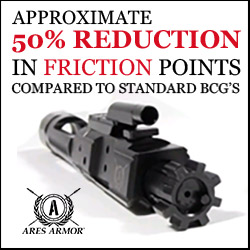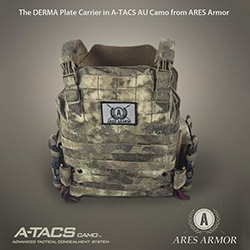Before you consider concealed carry of a firearm and heading cross-country be sure to familiarize yourself with the rules of firearm carry.
Brad Fitzpatrick
When Illinois was ordered to overturn its ban on concealed firearms due to a decision by a federal appeals court in 2013, it became the last state to adopt concealed carry legislation. Although every state now has specific language that covers CCW (or CCP, or CCDW, or whatever your state calls it), the lack of federal laws provides legislative elbow room when it comes to specific state laws regarding concealed carry. That means every time you cross a border you may be playing by a new set of rules, and it’s your responsibility to know them.
With more than 8 million CCW permit holders across the country, websites and books are now available that helps those traveling from state to state stay inside the legal lines. And while it would be impossible to cover all of the state laws in a single article, let’s focus on some of the key points that vary from state to state. This will help you better understand the law as it pertains to concealed carry.
Shall-Issue Versus May-Issue: The vast majority of states are known as “shall-issue” permit states. That means that anyone who meets the criteria to earn a carry permit will receive that permit based upon state law. That doesn’t mean that every state has the same requirements, though. Background checks are common in many states, but the level of training required to earn your permit is stated in the law and anyone who meets those requirements shall receive a permit.
May-issue states are different. In these states, you must show cause to the governing body (usually local law enforcement) why you are qualified to carry a firearm and they may or may not issue a permit. Simply put, there are no guarantees of issuance. The ultimate authority lies with local law enforcement, and there can be great disparity from district to district regarding the number of permits issued. Currently there are only a handful of may-issue states including California, New York, Hawaii, Massachusetts, Connecticut, New Jersey, Maryland, Delaware, and the District of Columbia, but this legislation can change quickly. All other U.S. states and Alaska are shall-issue.
Reciprocity: Some states honor permits issued in other states, and other do not. Furthermore, some states honor carry permits that are issued in certain states but not others. The topic of reciprocity can be very confusing, but you need to be certain that you know which states allow you to carry concealed with an out-of-state permit.
Rather than rehash the stats for each state, it’s much simpler to head to usacarry.com, which has an updated, interactive map of the states that offer reciprocity with the state that has issued your permit. My home state of Ohio, for instance, has reciprocity with 39 other states, the exceptions being California, Hawaii, Oregon, Illinois, and several northeastern and Atlantic states. This allows me to immediately recognize where I can carry and stay out of trouble.
For years, states like Florida have been issuing carry permits to non-residents who met the criteria for a Florida permit. The reasoning behind this is that a Florida permit has more reciprocity than other states, but time has leveled the legislative playing field and the majority of states now accept permits from other states. Still, be sure to check before you travel.
Restricted Areas: This is where the waters get murky because states laws governing restricted areas varies. In most states, for instance, elementary and secondary schools are considered restricted areas, though some states do have laws that allow for carry during drop-off and pick-up of students. Most state and federal government buildings are restricted, as are some establishments that sell alcohol. In some states, bars that serve food and single drinks are not restricted, and in some cases percentage of profits from alcohol products are used as a gauge. Nevertheless, knowing the restricted areas in your state is critical to staying out of trouble with the law.










